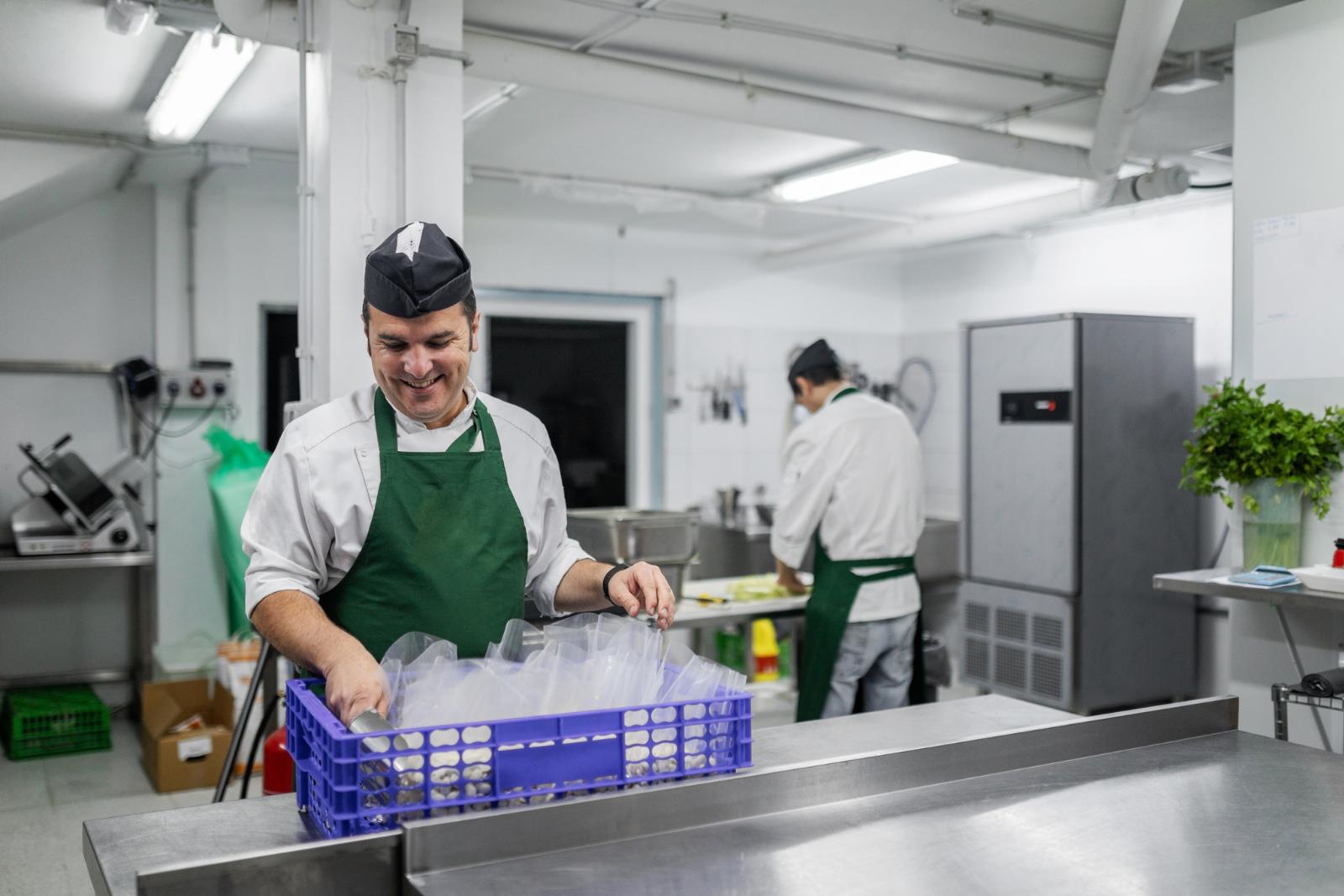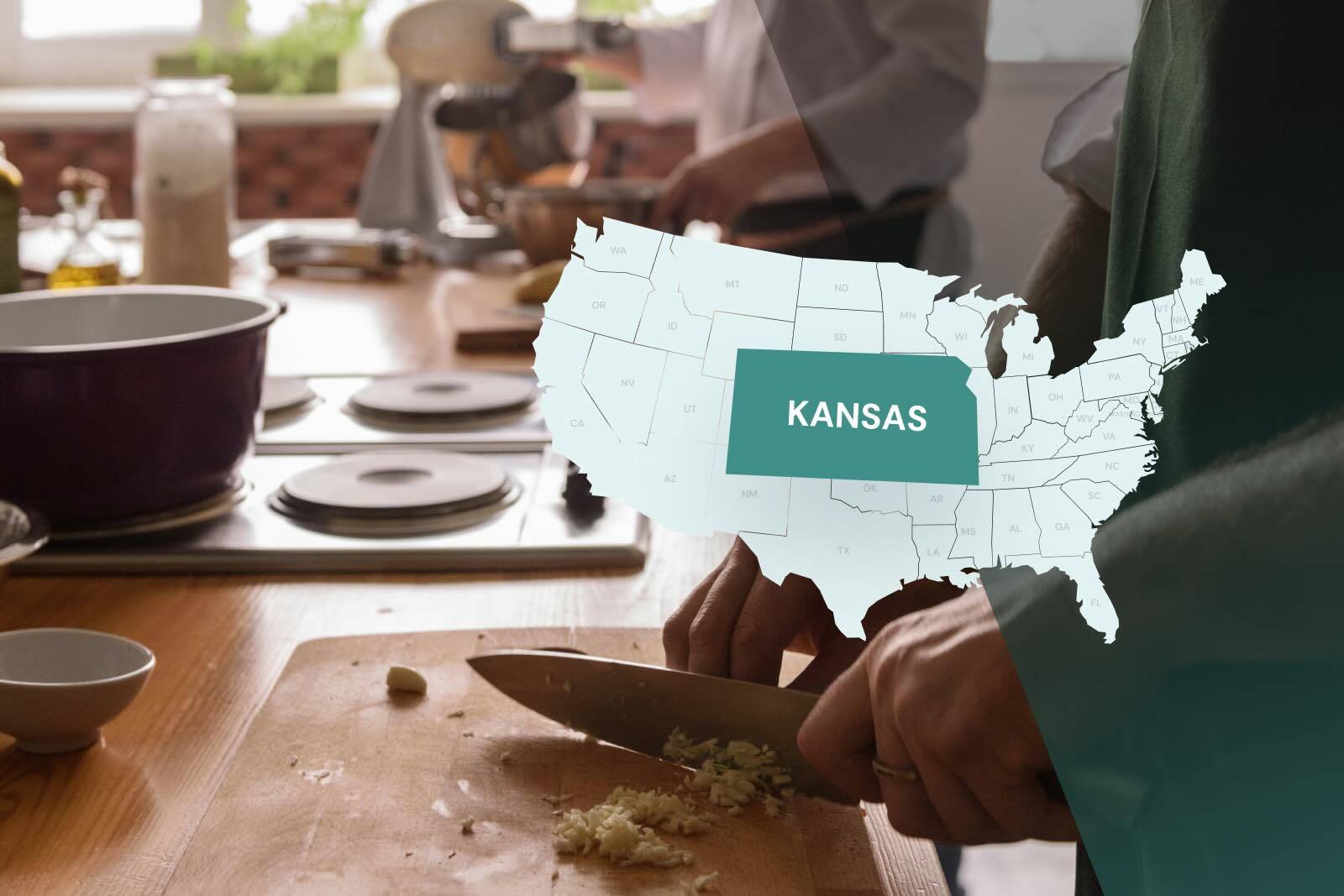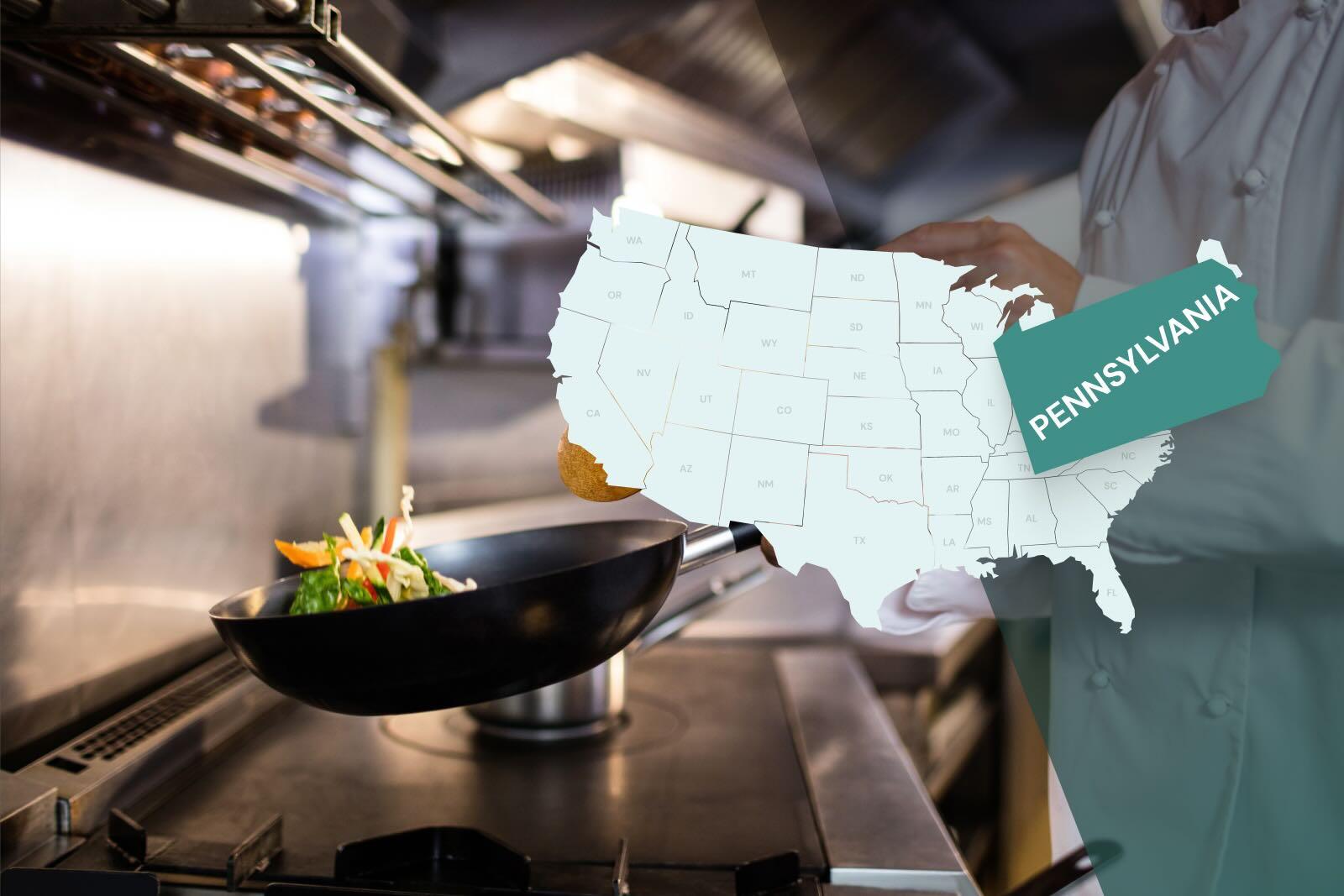Every day, foodservice professionals like you play a pivotal role in serving delicious meals to your customers. But did you know there’s a rich history behind the regulations and guidelines that keep our food safe?
Without these measures, our meals would be fraught with danger, putting the health and wellbeing of our customers at risk.
Though we may not always realize it, food safety regulations are critical to any food business, ensuring the food we serve is delicious–and safe for consumption.
In this post, we’ll dive into the fascinating history of food safety regulations and explore how these measures have evolved to keep our plates clean–and our stomachs happy!
Here’s what we’ll cover:
The early years (1800s-early 1900s)
The creation of government agencies (1900s-1960s)
The rise of modern food safety regulations (1970s-present)
The impact of food safety regulations

The early years
With the rapid growth of the United States during the 1800s and 1900s, the need for a comprehensive set of food safety regulations quickly rose to the forefront.
It’s not that foodborne illnesses were unheard of before this point. In 1646, colonists in Massachusetts passed the Act Against Selling Unwholesome Provisions, making it possible for someone to be criminally charged for knowingly selling “diseased, corrupted, contagious, or unwholesome provisions.”1 Though this is widely considered the first food safety law in the United States, it wasn’t until the 1800s that more widespread change began.
The Jungle
Upton Sinclair’s The Jungle, published in 1905-1906, was a novel that detailed the harsh conditions faced by workers in the meatpacking industry.2
The book described unsanitary practices, such as the presence of rats, spoiled meat, and other unmentionable things in the production of meat products. The book caused a public outcry and quickly became a best-seller, leading the government to take action to ensure the public’s safety.
Pure Food and Drug Act
This book (along with other exposes by journalists) ultimately led to the creation of the Pure Food and Drug Act of 1906, which established the first set of regulations to guarantee the safety of food and drugs consumed by the American public.3
The Act ensured that food and drugs were free from harmful substances and that labels accurately reflected the contents of the product inside. The Act also provided for an inspection system to monitor food production, and it established the Bureau of Chemistry (also known as the Department of Chemistry), which would later become the Food and Drug Administration (FDA).
Meat Inspection Act of 1906
The Meat Inspection Act of 1906 was another important regulation created in response to public outrage over the conditions revealed in Sinclair’s book.
This Act aimed to ensure that meat products were produced under hygienic conditions. It established a system of inspection for all meat products and required that any meat found to be unsanitary was immediately destroyed.
 The creation of government agencies
The creation of government agencies
These early regulations described above paved the way for the creation of many other food safety regulations in the following years.
Food production had become increasingly mechanized with the Industrial Revolution in full swing. As a result, safety became a major concern as more and more people became ill from contaminated food.
The government responded to this need by creating agencies that would oversee the safety of our food supply and establish regulations to ensure that it was safe for consumption.
The Food and Drug Administration (FDA) was created in 1906, followed by the United States Department of Agriculture (USDA) in 1907. These agencies were responsible for monitoring the safety and quality of food products and ensuring that they complied with national standards.
Creation of the FDA and USDA
The FDA became the primary agency responsible for food safety regulation in the United States. Its primary role was to protect public health by ensuring the safety, efficacy, and security of human and veterinary drugs, biological products, medical devices, our nation's food supply, cosmetics, and products that emit radiation.
Over the years, the FDA has significantly shaped food safety regulations, introducing new laws and guidelines to protect consumers.
The USDA was technically created in 1862 but played only a minor role until the mid-1900s.
It was written into law in 1862 by Abraham Lincoln, referred to as “The People’s Department,” and was formed to oversee food safety in the US. The Department of Chemistry, as described above, was created under the auspices of the USDA, as was the National Association of State Dairy and Food Departments (in 1897).1
Over time, the primary role of the USDA evolved so that its mission was to oversee the production and distribution of meat, poultry, and egg products.4 The agency mandated meat and poultry inspections to ensure the products are safe for human consumption.
Today, the USDA and the FDA play a critical role in ensuring food safety in the USA. The FDA is responsible for regulating all non-meat and poultry products, including fruits, vegetables, dairy products, and seafood, to name a few. It is responsible for everything from labeling regulations to enforcing food safety standards to ensuring the safety of imported food products.
Conversely, the USDA oversees meat, poultry, and egg production and distribution. It mandates inspections at every stage of production to ensure the products are safe to eat. The agency also regulates the labeling requirements for all USDA-regulated products.
Food, Drug, and Cosmetic Act of 1938
One of the most important food safety laws introduced by the FDA is the Food, Drug, and Cosmetic Act of 1938.
This act was introduced following a series of deaths caused by the consumption of a medication containing diethylene glycol, an industrial solvent.
The act required that food products be free from harmful substances and that their labeling be truthful and not misleading.
Food Additives Amendment of 1958
The Food Additives Amendment of 1958 was another significant piece of legislation introduced by the FDA. This amendment required manufacturers to prove that any food additives used in their products were safe for human consumption before being widely used.
The amendment also required the FDA to set standards for food additives and establish a list of additives that were generally recognized as safe (GRAS).
In the 1950s, the Delaney Clause was established.5 This clause prohibited the approval of any additives that were found to cause cancer in animals or humans (initially, it focused on pesticides in processed foods).
This clause was eventually seen as too strict and was modified in 1996 to allow for the approval of additives deemed safe by the FDA.
As part of this, the Color Additives Amendment of 1960 resulted in the FDA establishing a list of approved color additives that could be used in food products.6 This amendment required manufacturers to demonstrate the safety of any color additives before use in food products.
 The rise of modern food safety regulations
The rise of modern food safety regulations
Despite the progress made in the 20th century related to food safety and related regulations, it wasn't until 1976 that the landmark Food Safety and Quality Protection Act was passed. This act set the stage for modern food safety regulations as we know them today.
In a nutshell, this act required food processing facilities to follow specific guidelines and regulations, and it also established the Food and Drug Administration (FDA) as responsible for overseeing food safety in the United States.
Also, in the 1970s, the CDC began keeping records on foodborne illness, making it easier to track potential food supply issues.7
The Food Safety and Inspection Service (FSIS) was established in 1977 to ensure the safety of meat, poultry, and egg products.8 This shift occurred after an outbreak of salmonella in eggs led to a recall of over 17 million eggs. That outbreak was a wake-up call for the food industry and consumers alike.
As a result, the Food and Drug Administration's (FDA) Center for Food Safety and Applied Nutrition (CFSAN) was created in 1988. These organizations and other regulatory bodies have worked ever since to develop and enforce strict food safety standards.
Since then, the most significant changes in food safety regulations have occurred through the implementation of the Hazard Analysis and Critical Control Points (HACCP) system.
This system is based on the idea that prevention is better than reacting after a problem has occurred, and it has become the standard for food safety worldwide. Implementing HACCP (Hazard Analysis and Critical Control Points) plans resulted in a 20% reduction in outbreaks caused by microbiological contamination, such as Salmonella and E. Coli. in the first seven years of its existence alone.9
Another significant regulation that has come into play over the years is the Food Safety and Modernization Act (FSMA), passed in 2011.10
This act requires all food processing facilities to implement food safety plans and also gives the FDA more power to enforce regulations and hold companies accountable for violations.11
The impact of food safety regulations
Fast forward to the present day, and many regulations are now in place to protect consumers from foodborne illnesses. These include everything from mandatory food safety training for foodservice staff to regular inspections of food facilities.
But it's not just regulations that have changed. Technology has also played a significant role in improving food safety.
For example, many food companies now use blockchain technology to track the journey of their products from farm to table, ensuring that any issues can be quickly identified and resolved.12
All in all, these regulations have significantly changed how we prepare and serve food, ultimately improving our customers' health and safety.
Gone are the days when we could wing it in the kitchen without proper sanitation and handling practices. We now have to be diligent in our efforts to prevent foodborne illnesses by following strict guidelines set forth by governing agencies, such as the FDA and USDA.
Compliance can be costly and time-consuming, but it's a small price compared to the expenses of lawsuits, bad publicity, and loss of customer trust due to a foodborne illness outbreak.
The positive impact of these regulations outweighs the negatives. Food safety programs have significantly reduced the number of foodborne illness outbreaks–and that's a big win for everyone involved.
Current challenges and issues
Despite the major wins we’ve experienced as a society regarding food safety regulations over the years, we still need to overcome some significant hurdles.
One of these is that foodborne illnesses are, unfortunately, on the rise.13 With the increase in food production and consumption, there has also been a rise in foodborne illnesses.
According to the Centers for Disease Control and Prevention (CDC), approximately one in six Americans gets sick from foodborne diseases every year.14 These illnesses are caused by pathogens such as Salmonella, E. Coli, and Listeria that can contaminate food during production, processing, storage, or preparation.
Another big challenge in the food industry is the emergence of antibiotic-resistant bacteria. Antibiotics are commonly used in agriculture to prevent and treat livestock infections (and are essential in doing so). Still, the overuse and misuse of these drugs can lead to the development of antibiotic-resistant bacteria that can infect and harm humans.
In June of 2023, the US Food and Drug Administration Center announced that all over-the-counter antibiotics for livestock use would now require a prescription from a licensed veterinarian–a big step in combating this problem.15
Finally, the world is becoming more interconnected, significantly impacting the food industry.
Globalization has led to greater availability and diversity of food products, but it has also created safety, quality, and sustainability challenges. We all must work together to support sustainable farming practices and source local products whenever possible to reduce the distance food travels–and create a healthier, more stable, and safer food system overall.
The Takeaway
The challenges and issues related to food regulations are complex and ever-evolving. Still, as foodservice professionals, we can play a vital role in ensuring our industry is safe, sustainable, and responsible.
By staying informed about past and current regulations and by practicing good hygiene and food safety techniques, we, as foodservice professionals, can continue to do our part in keeping everybody’s plates safe in addition to being delicious.
Trust20 offers a range of innovative training products specifically designed to help foodservice professionals maintain the highest standards of safety and hygiene in their establishments. By incorporating these products into your training plans, you can rest assured that you are doing everything possible to protect your customers from foodborne illness.
With Trust20 on your side, you can rest assured that you’ll have the knowledge you need to remain compliant with the latest and most important regulations in food safety. Get the peace of mind you need today!
Sources:
- Quality Assurance Magazine: The Past, Present and Future of Food Safety
- FDA: The Origins of the FDA History Office
- FDA: Part I: The 1906 Food and Drugs Act and Its Enforcement
- USDA: About the U.S. Department of Agriculture
- FDA: Milestones in U.S. Food and Drug Law
- NDSU: History of US Food Regulation
- Institute of Food Technologists: A Historical Look at Food Safety
- USDA: USDA Food Safety and Inspection Service
- Margaret D Weinroth et al: History, development, and current status of food safety systems worldwide
- MSU Extension: History of food safety in the U.S.
- FDA: Food Safety Modernization Act and Animal Food
- S&P Global Market Intelligence: Companies use blockchain to track food products from farm to fork
- CNN: Your risk of getting sick from germy food has gone up again, CDC says
- CDC: Press Release - CDC Reports 1 in 6 Get Sick from Foodborne Illnesses Each Year
- Oregon State University Extension: Over-the-counter sale of livestock antibiotics ends June 11, 2023. How can you prepare?





